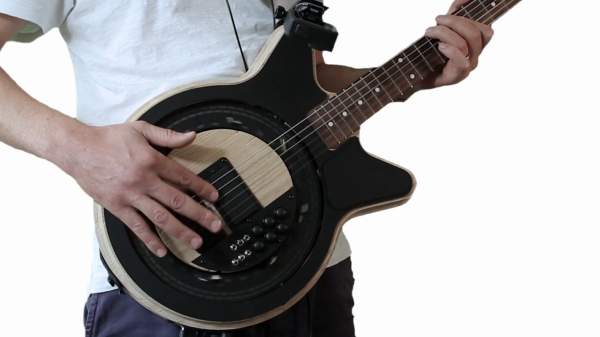In the 60s a musical recording technique called the “wall of sound” came to prominence which allowed artists to create complex layers of music resulting in a novel, rich orchestral feeling. While this technique resulted in some landmark albums (Pet Sounds by the Beach Boys for example) it took entire recording studios and many musicians to produce. This guitar, on the other hand, needs only a single musician but can create impressive walls of sound on its own thanks to some clever engineering.
Called the Circle Guitar and created by [Anthony Dickens], the novel instrument features a constantly-rotating wheel around the guitar’s pickups in the body. Various picks can be attached in different ways to the wheel which pluck the strings from behind continuously. This exceeds what a normal guitar player would be able to do on their own, but the guitarist is able to control the sounds by using several switches and pushbuttons which control a hexaphonic humbucker and are able to mute individual strings at will. Of course, this being the 21st century, it also makes extensive use of MIDI and [Anthony] even mentions the use of a Teensy.
While details on this project are admittedly a little fleeting, the videos linked below are well worth a watch for the interesting sounds this guitar is able to produce. Perhaps paired with a classic-sounding guitar amplifier it could produce other impressive walls of sound as well. Either way, we could expect someone like [Brian Wilson] to be interested in one once it is in production.
Thanks to [Mel] for the tip!
Continue reading “Circle Guitar Creates Wall Of Sound” →














